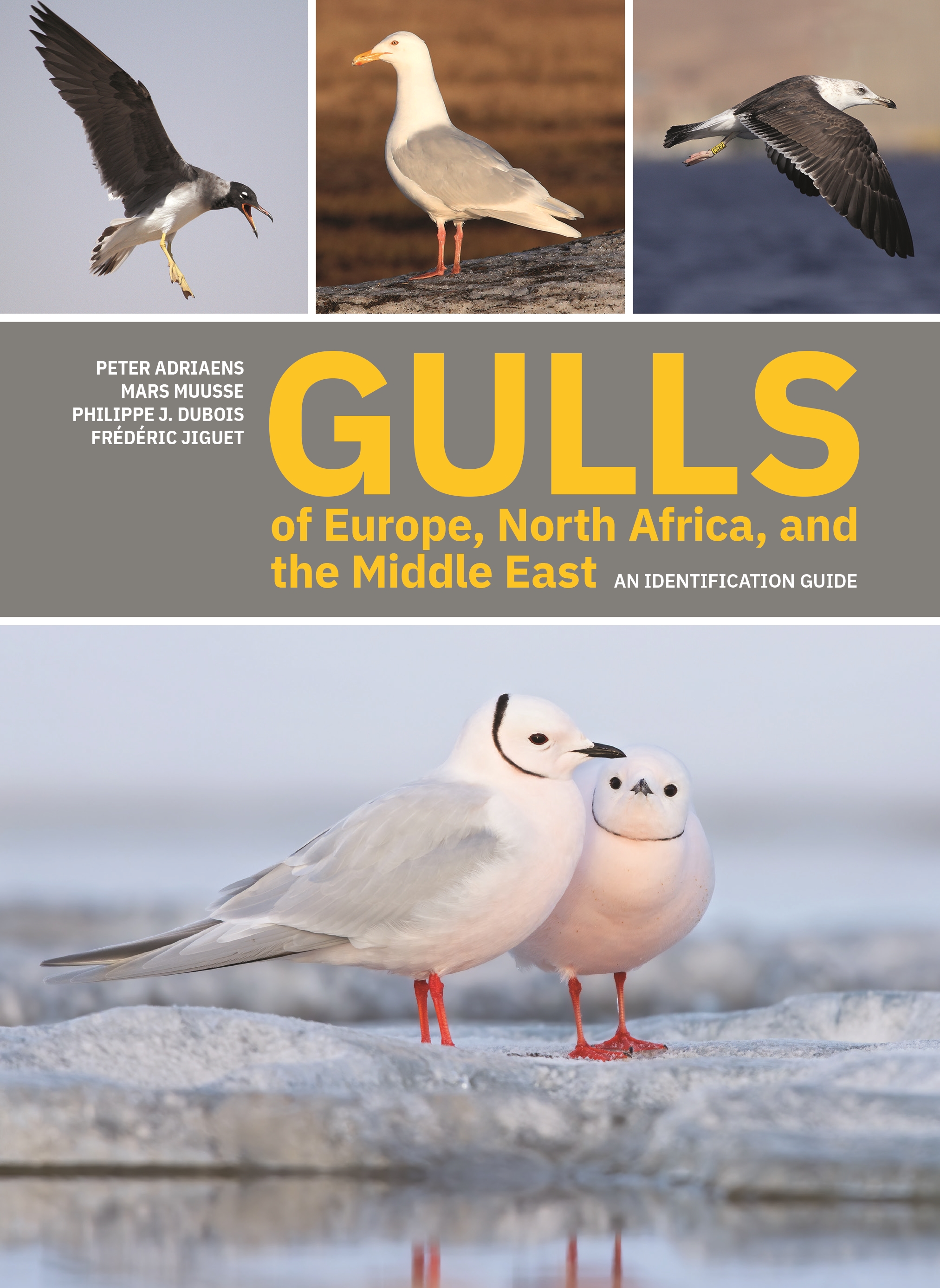Gulls of Europe, North Africa, and the Middle East
- Gulls of Europe, North Africa, and the Middle East by Peter Adriaens, Mars Muusse, Philippe J Dubois and Frédéric Jiguet (Princeton University Press, New Jersey, 2021).
- 320 pages.
- ISBN 9780691222837. Pbk, £29.99
- Bookshop from £25.00
On the frontline of our ever-advancing knowledge of the world's birds is the gull family. This group is increasingly studied by birders worldwide, as admiration for their intelligence, migratory and vagrancy feats, as well as plumage variation, makes for an entertaining and dynamic, yet simultaneously challenging, set of species on which to focus.
It would be fair to say that the popularity of gulls has developed particularly across the Western Palearctic, where a growing and dedicated contingent of watchers continues to document these birds across the region and regularly unearth some real surprises.
The rise of their popularity, as well as rapid advances in the understanding of plumage variations and taxonomic status, render gulls a deserved subject of regular updates to books and other reference material, insomuch as no one is left thinking "not another field guide" when something is published …
The recently released Gulls of Europe, North Africa, and the Middle East is a fine example of a guide that more than justifies its publication. While there have been a few tomes published about this family over the past couple of decades – notably Klaus Malling Olsen's Gulls of Europe, Asia and North America (2004) and Gulls of the World (2018) – this newcomer establishes a niche of its own and can be considered the new benchmark in its field.
Written and compiled by experts Peter Adriaens, Mars Muusse, Philippe Dubois and Frédéric Jiguet, the book takes on a slightly different format compared to previous offerings on the family. In terms of layout, it is characterised by annotated 'cut-out' photos of gulls – meaning that key features are directly labelled for ease of understanding and recognition, and off-putting or distracting backgrounds are removed in order to focus the attention fully on the subject matter.
Each species commences with adult plumages, followed by 'first cycle' before working up through the immature age classes. The design is fresh, clear and distinctively modern which, combined with the image layout, makes for an original yet effective style. Pages are by no means cluttered – something that would be easy to do in a guide on gulls – with plenty of breathing space for the images, even with annotations.
Text is clear and concise throughout, with key features succinctly summarised and often bullet pointed in the species accounts. Structure is often under-appreciated as an aspect of gull identification and it's great to see that it features prominently in this book – in fact, it's the first aspect of each species account, presented in a distinctive yellow box. Also 'yellow boxed' is a range section, where a species' distribution, migration and vagrancy are discussed.
One of the most satisfying attributes of the species accounts are the 'Similar taxa' charts. These occur throughout, with every age of every species represented with comparable plumages in other species that could prove to be identification pitfalls. Even adult Ivory Gull, as distinctive as it is, isn't exempt, with leucistic Kittiwake and Common Gull illustrated and annotated for comparative purposes. All are helpful, but those on adult Kelp Gull and adult Caspian Gull stood out as particularly useful.
Attention to detail is something this book possesses throughout, as you might expect given the authors' credentials. For the keen European guller, the number of pages dedicated to some of the region's rarest vagrants is very pleasing. The space dedicated to tricky vagrants, such as American Herring and Thayer's Gulls, as well as rare Pacific wanderers, including Slaty-backed and Vega Gulls, justify the purchase. No doubt the Short-billed and Kamchatka Gull sections will be meticulously studied by many!
Also handy are the concluding pages, which tackle hybrids. 'Viking Gull' gets its own account, while a range of Caspian × Herring Gulls are illustrated – the latter a combination at the fore of many gullers' minds in contemporary times.
All in all, this is a superb book that is all it promised to be and more. The authors have been pleasingly progressive and forward thinking in their attitude to both content and layout. This isn't just another book on gulls, it's the book on gulls that every birder needs in their life in 2022 – no matter their experience level.



